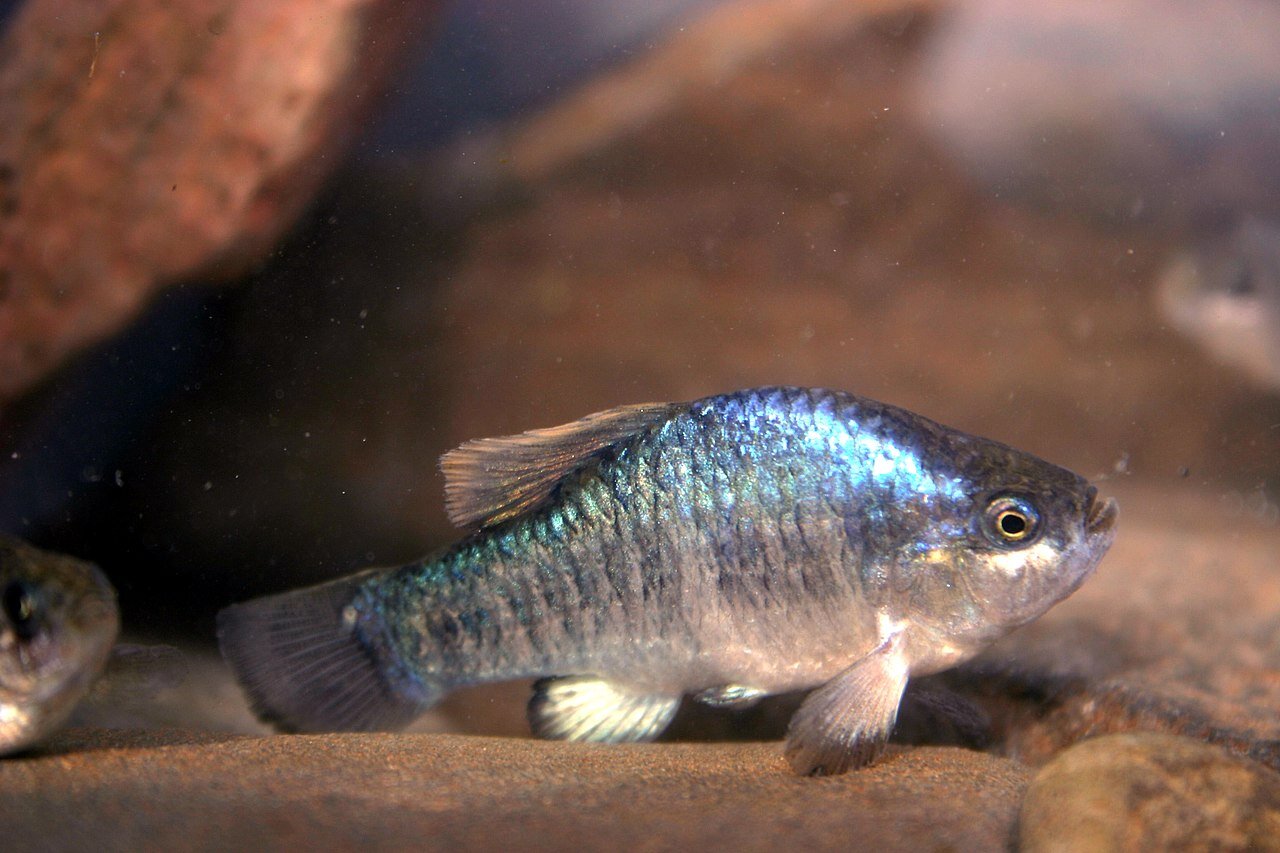Owens pupfish (Cyprinodon radiosus), Fish Slough Ecological Reserve. Photo by Joe Ferreira, California Dept. of Fish and Wildlife (Wikipedia).
By Sabrina Imbler, New York Times, Aug. 16, 2021
The Owens pupfish, a small blue fish native to the springs in the California desert, was spared from extinction on an August afternoon in 1969 by Phil Pister and his two buckets.
That day Mr. Pister, a state wildlife biologist, had heard that a marsh called Fish Slough, one of the few natural oases in the arid Owens Valley, was on the verge of drying up. The marsh, he knew, held the world’s last population of Owens pupfish. So he grabbed the buckets, jumped in his pickup truck and sped through ranch land toward water. The drive from his office in Bishop normally took 15 minutes; he did it in 10.
He parked in a cloud of dust, then he and a small crew hurriedly corralled 800 or so pupfish into mesh cages in the dregs of the pond. Afterward, he shooed his colleagues into town for dinner; he would finish up. But when he returned to the edge of the pool, he saw that the caged pupfish were dying, some already belly-up. By accident, he had placed the cages away from the oxygenated current, leaving the last Owens pupfish in the world to choke to death on air.

